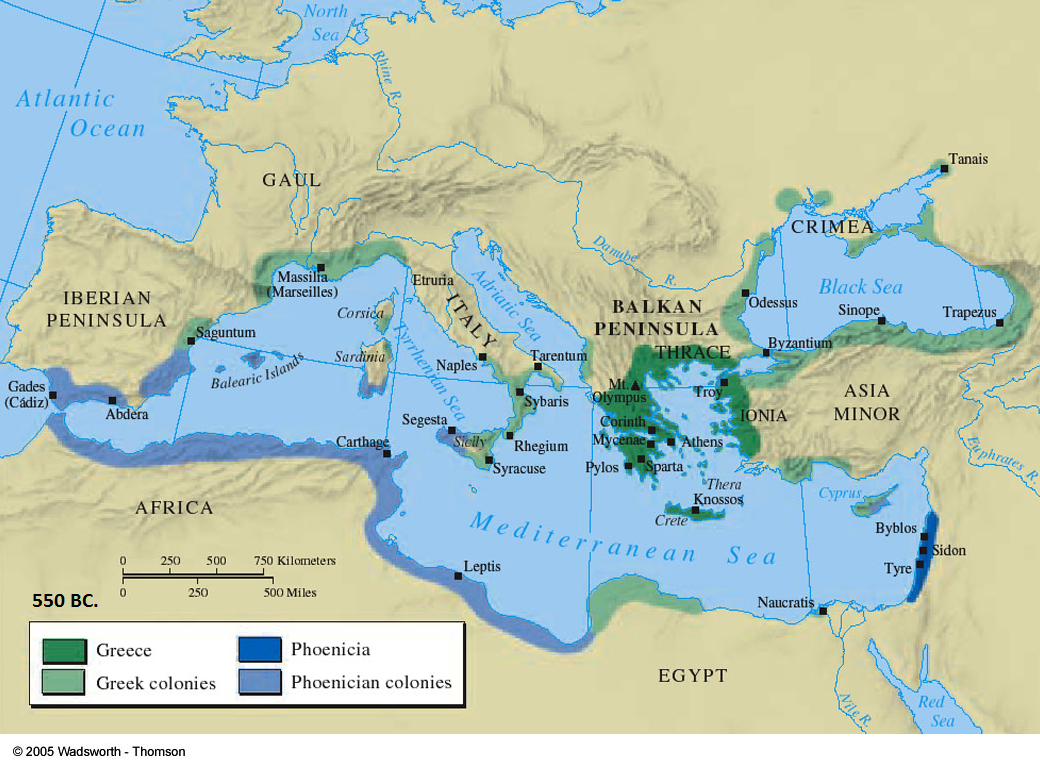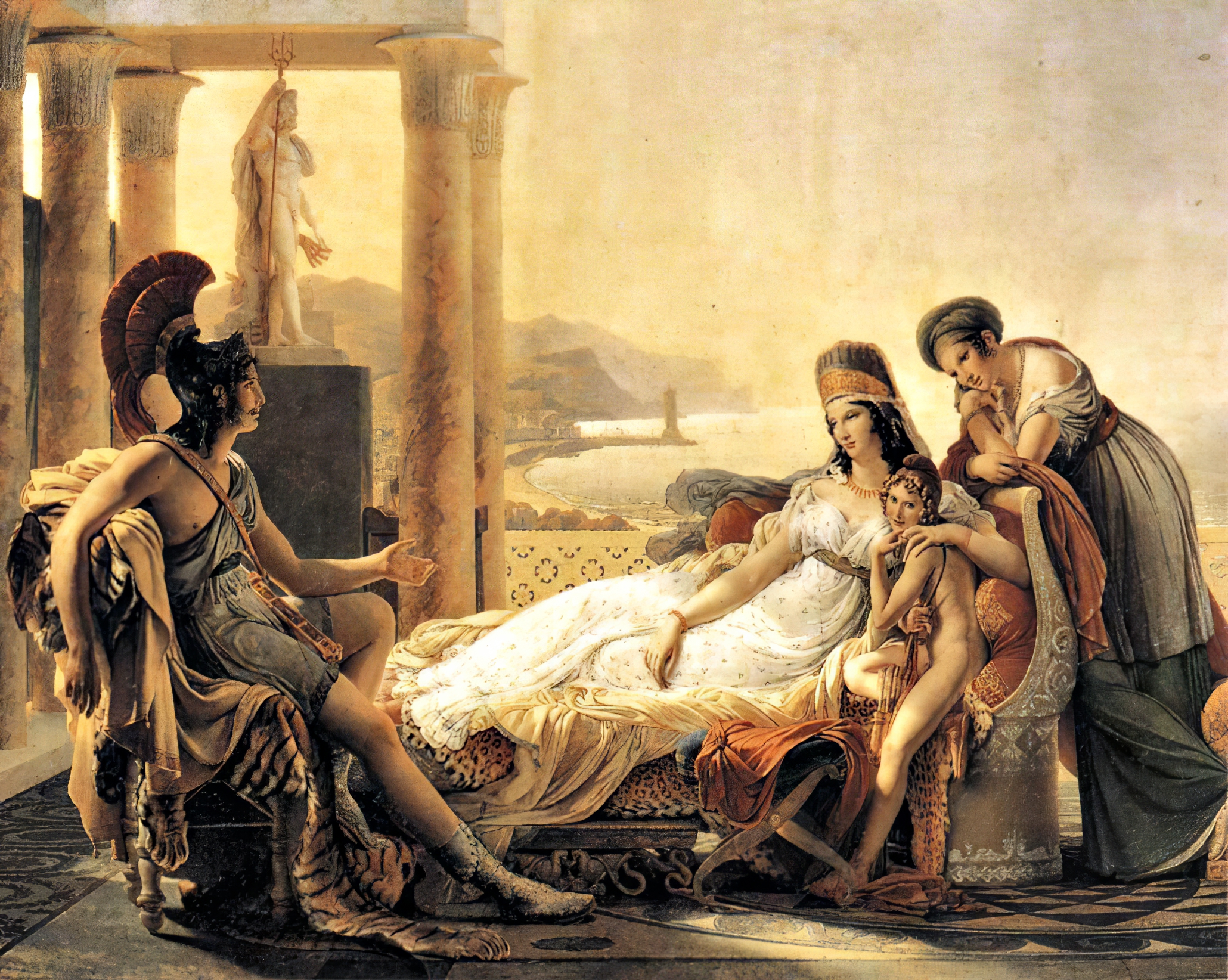RHAS
Elite member
- Messages
- 268
- Reaction score
- 22
- Points
- 0
Haplogroup J2, Phoenicians and the spread of the Alphabet.
"Phoenicians themselves reportedly had a rich literature, it was totally lost in antiquity. That's ironic, because the Phoenicians actually developed the modern alphabet and spread it through trade to their ports of call. Acting as cultural middlemen, the Phoenicians disseminated ideas, myths, and knowledge from the powerful Assyrian and Babylonian worlds in what is now Syria and Iraq to their contacts in the Aegean. Those ideas helped spark a cultural revival in Greece, one which led to the Greeks' Golden Age and hence the birth of Western civilization. The Phoenicians imported so much papyrus from Egypt that the Greeks used their name for the first great Phoenician port, Byblos, to refer to the ancient paper. The name Bible, or "the book," also derives from Byblos. Today, Spencer Wells says, "Phoenicians have become ghosts, a vanished civilization." Now he and Zalloua hope to use a different alphabet, the molecular letters of DNA, to exhume these ghosts."
National Geographic - Who were the Phoenicians?
http://ngm.nationalgeographic.com/ngm/0410/feature2/?fs=www3.nationalgeographic.com


"Phoenicians themselves reportedly had a rich literature, it was totally lost in antiquity. That's ironic, because the Phoenicians actually developed the modern alphabet and spread it through trade to their ports of call. Acting as cultural middlemen, the Phoenicians disseminated ideas, myths, and knowledge from the powerful Assyrian and Babylonian worlds in what is now Syria and Iraq to their contacts in the Aegean. Those ideas helped spark a cultural revival in Greece, one which led to the Greeks' Golden Age and hence the birth of Western civilization. The Phoenicians imported so much papyrus from Egypt that the Greeks used their name for the first great Phoenician port, Byblos, to refer to the ancient paper. The name Bible, or "the book," also derives from Byblos. Today, Spencer Wells says, "Phoenicians have become ghosts, a vanished civilization." Now he and Zalloua hope to use a different alphabet, the molecular letters of DNA, to exhume these ghosts."
National Geographic - Who were the Phoenicians?
http://ngm.nationalgeographic.com/ngm/0410/feature2/?fs=www3.nationalgeographic.com

Haplogroup J2 and the Spread of the Alphabet. (Greek and Phoenician)
The Abduction of Europa: mosaic, Byblos, 3rd century A.D . National Museum of Beirut Collection. According to the Greek legend Europa’s brother Cadmus went looking for his kidnapped sister who is depicted on the mosaic being whisked away on the back of Zeus disguised as a bull. The story goes that in his search for Europe Cadmos transmitted the Phoenician alphabet to the Hellenes.

"Cadmus or Kadmos (Ancient Greek: Κάδμος), in Greek mythology, was a Phoenician prince, the son of king Agenor and queen Telephassa of Tyre and the brother of Phoenix, Cilix and Europa. He was originally sent by his royal parents to seek out and escort his sister Europa back to Tyre after she was abducted from the shores of Phoenicia by Zeus. Cadmus founded the Greek city of Thebes, the acropolis of which was originally named Cadmeia in his honour. Cadmus was credited by the ancient Greeks (Herodotus is an example) with introducing the original Alphabet or Phoenician alphabet -- phoinikeia grammata, "Phoenician letters"—to the Greeks, who adapted it to form their Greek alphabet."
Cadmus.
http://en.wikipedia.org/wiki/Cadmus
"The authors found a weak – but significant – genetic signature among their samples that could not be explained by chance. Many of the samples belonged to a very specific branch of haplogroup J2, which the authors believe points back to distinct migrations by Phoenician traders from the Middle East into Europe and North Africa more than 3,000 years ago."
Ripples in the Mediterranean: Tracing the Genetic Origins of the Phoenicians.
http://blog.23andme.com/ancestry/rip...e-phoenicians/
"The ancient Greeks and Phoenicians were the main driving forces behind the spread of J2 around the western and southern Mediterranian."
Eupedia.com, 2013.
http://www.eupedia.com/europe/origin...s_europe.shtml
"In 2004, two geneticists educated at Harvard University and leading scientists of the National Geographic Genographic Project, Dr. Pierre Zalloua and Dr. Spencer Wells, identified "the haplogroup of the Phoenicians" as haplogroup J2, with avenues open for future research."
Familypedia.com - Phoenicia.
http://familypedia.wikia.com/wiki/Phoenicia
"Occurrence of J2-M172 Y-chromosomes in Tuscany has been related to the Etruscan heritage of the region."
Uniparental Markers of Contemporary Italian Population Reveals Details on Its Pre-Roman Heritage.
http://www.plosone.org/article/info:...l.pone.0050794
"There is a distinct association of ancient J2 civilisations with bull worship."
Eupedia.com, 2011.
http://www.eupedia.com/europe/Haplogroup_J2_Y-DNA.shtml

http://en.wikipedia.org/wiki/History_of_the_alphabet
"Phoenician became one of the most widely used writing systems, spread by Phoenician merchants across the Mediterranean world, where it was assimilated by many other cultures and evolved."
Phoenician Alphabet.
http://en.wikipedia.org/wiki/Phoenician_alphabet
"The Greek alphabet was developed by a Greek with first-hand experience of contemporary Phoenician script and, almost as quickly as it was established in the Greek mainland was rapidly re-exported, eastwards to Phrygia, where a similar script was devised, and westwards with Euboean or West Greek traders, where the Etruscans adapted the Greek alphabet to their own language."
History of the Greek Alphabet.
http://en.wikipedia.org/wiki/History...Greek_alphabet
"The Latin alphabet is the main writing system in use in the Western world and is the most widely used alphabetic writing system in the world. It is the standard script of the English language and is often referred to simply as "the alphabet" in English. It is a true alphabet which originated in the 7th century BC in Italy and has changed continually over the last 2500 years. It has roots in the Semitic alphabet and its offshoot alphabets, the Phoenician, Greek, and Etruscan."
History of the Latin Alphabet.
http://en.wikipedia.org/wiki/History...Latin_alphabet


Last edited:







